Hisense proves here that it can deliver products of really decent quality. The Hisense U7NQ is a television that offers many advantages, with its picture quality being one of its main assets. Thanks to Mini LED technology, this television offers deep blacks and high brightness, positively influencing contrast and image dynamics. Dolby Vision support further increases the capabilities of this model, providing cinematic experiences at home. When it comes to motion smoothness, the Hisense U7NQ is a great choice for gamers and those who appreciate dynamic content, such as sports. The rapid 144 Hz panel, low input lag, and additional features like VRR, ALLM, and Game Bar make gameplay on this television smooth and responsive. For daily usage, the television deserves praise for its high efficiency during the day. The high brightness level of 915 cd/m² means that the television performs well even in bright rooms, and additional features like the ability to record programs make it a very functional everyday choice. Despite all its advantages, the Hisense U7NQ also has its drawbacks. The VIDAA operating system, while fast, is not yet as developed as other platforms available on the market, resulting in the absence of several popular applications such as Spotify or Tidal. Gamers may be disappointed by the lack of support for HGiG, which affects the optimal reproduction of details in HDR games. If we plan to connect the television to a computer, we must reckon with issues related to font readability, especially on dark backgrounds. The Hisense U7NQ is a solid TV that offers very good picture quality and rich features for gamers. Despite a few shortcomings, it is a model that will satisfy most users, providing high picture quality, motion smoothness, and useful user features.
- Matching (Score)
- Our verdict
- TV appearance
- Where to buy
- Contrast and black detail
- HDR effect quality
- Factory color reproduction
- Color reproduction after calibration
- Smoothness of tonal transitions
- Image scaling and smoothness of tonal transitions
- Blur and motion smoothness
- Console compatibility and gaming features
- Input lag
- Compatibility with PC
- Viewing angles
- TV efficiency during daytime
- Details about the matrix
- TV features
- Apps
- Playing files from USB
- Sound
Hisense U7NQ vs Hisense E8Q
Direct compare
Check the best price offer:
Hisense U7NQU7NQ
E8Q

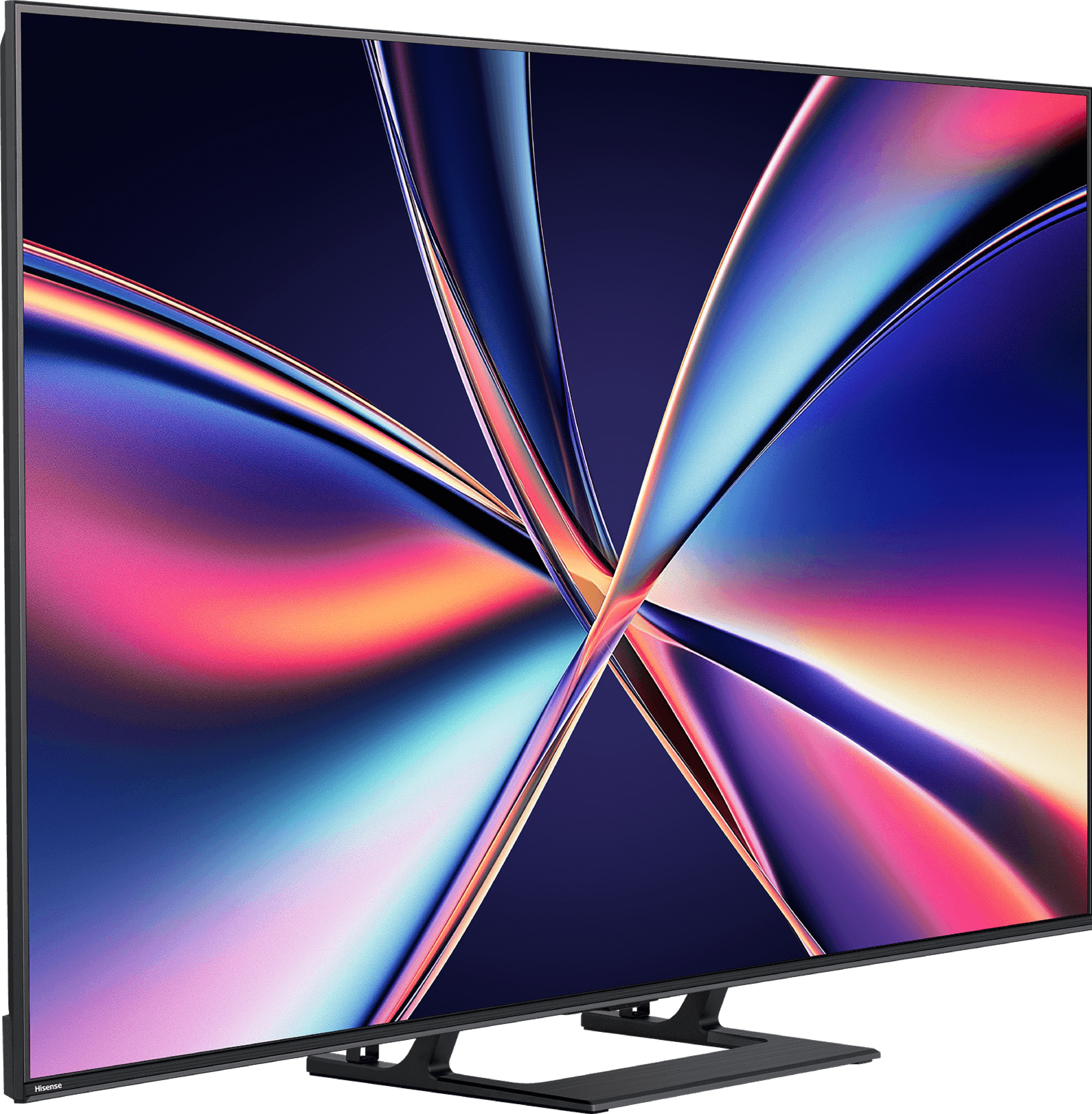
Panel type: LCD VA
Resolution: 3840x2160
System: VIDAA
Model year: 2024
Complete the survey to find out the result

Panel type: LCD VA
Resolution: 3840x2160
System: VIDAA
Model year: 2025
Complete the survey to find out the result

Overall rating
7.3
7.2
Movies and series in UHD quality
7.0
6.7
Classic TV, YouTube
6.7
6.8
Sports broadcasts (TV and apps)
6.4
6.5
Gaming on console
8.2
8.0
TV as a computer monitor
8.0
8.6
Watching in bright light
7.6
6.2
Utility functions
9.0
8.9
Apps
7.7
7.7
Sound quality
6.9
7.2
Complete the survey to find out what fits your preferences
Advantages
Good contrast
High brightness of the panel - good performance during the day
Very good for gamers, sports - VRR, ALLM 144Hz
Low input lag
Recording function from built-in tuners
Great contrast and deep black
Very good fluidity of tonal transitions (close to reference level)
High brightness
Support for 4K 144 Hz and even 240 Hz in Full HD
VRR, ALLM, G-SYNC – a complete package for gamers
Low input lag
Many classic TV features built into the VIDAA system
Disadvantages
Not the best Image scaling and smoothness of tonal transitions
No support for HGiG (makes HDR setup difficult on consoles)
U7Q
Our verdict
The Hisense E8Q is a television that clearly draws heavily from the U7Q model – and that's a good thing. After all, it is its European version, not another "diet" mutation. Just a few moments with this screen reveal that the E8Q is trying to impress. And in many ways, it really succeeds. Right off the bat – what stands out: the black is deep, the contrast is high, and the brightness exceeds the threshold that we can simply call satisfying. Let's add to that almost perfect smoothness in tonal transitions, and we have an image that looks very mature, especially for this price segment. In gaming? Just as good. It supports VRR, ALLM, 144 Hz in 4K, and even 240 Hz in Full HD – it's hard to find fault here. Well… almost. Because the E8Q has one additional flaw compared to the U7Q – the sound. In our unit, even at moderate volume levels, the back of the casing started to resonate, generating quite unpleasant crackling noises. This might be a flaw in the test sample, but since the U7Q simply performed better – it's worth noting. Especially if you find both models at a similar price. We can confidently state that the E8Q is a television that can boldly compete for the attention of those looking for a quality Mini-LED at a reasonable price. If a good deal comes along, it's definitely worth it – because we get almost the same as with the U7Q. And that means a really solid picture, excellent gaming features, and overall very good equipment that you can stick with for a long time.
TV appearance




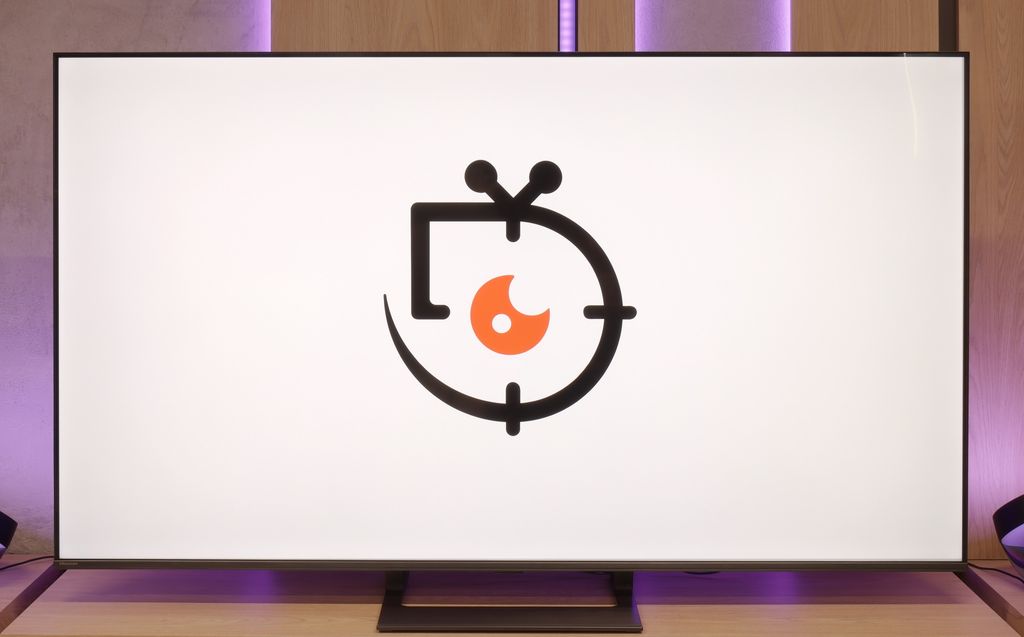
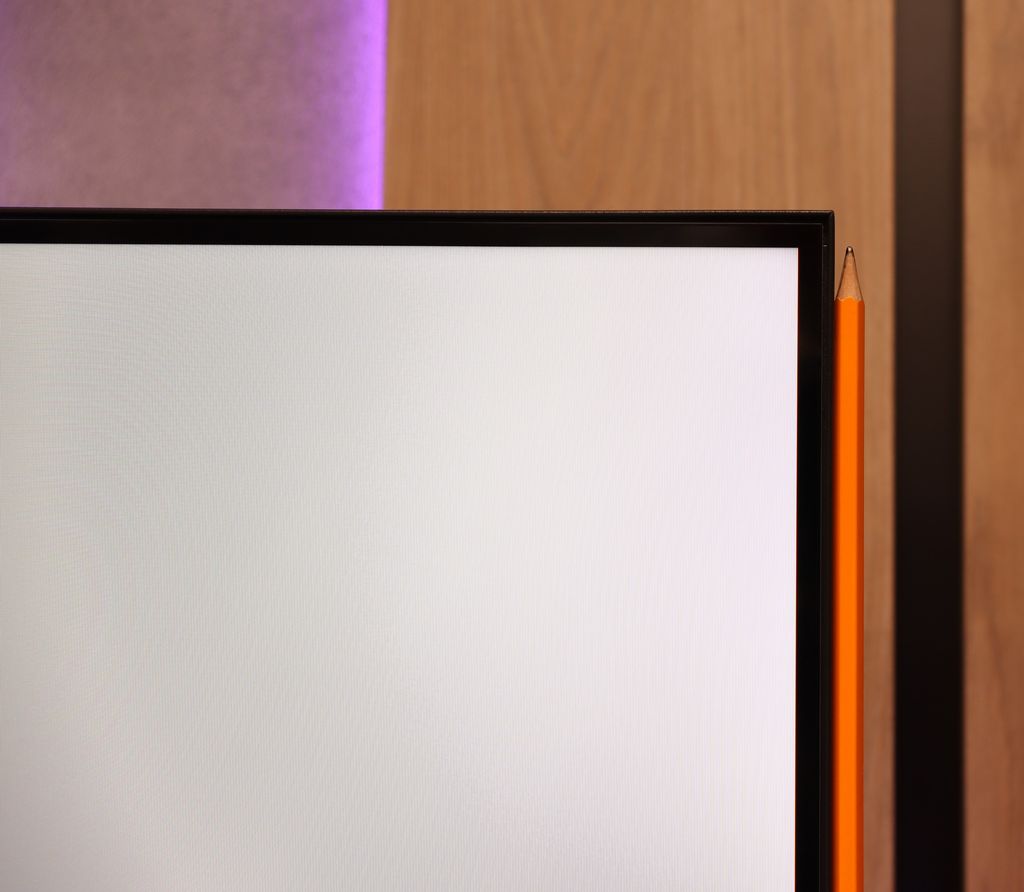
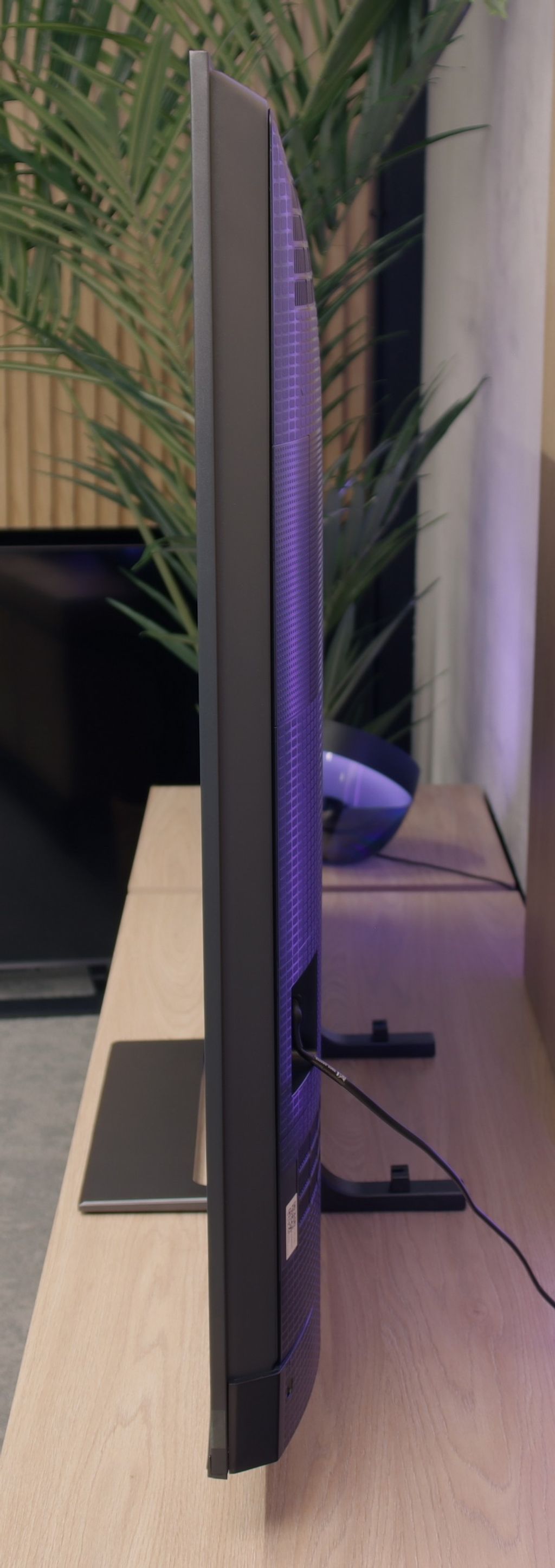
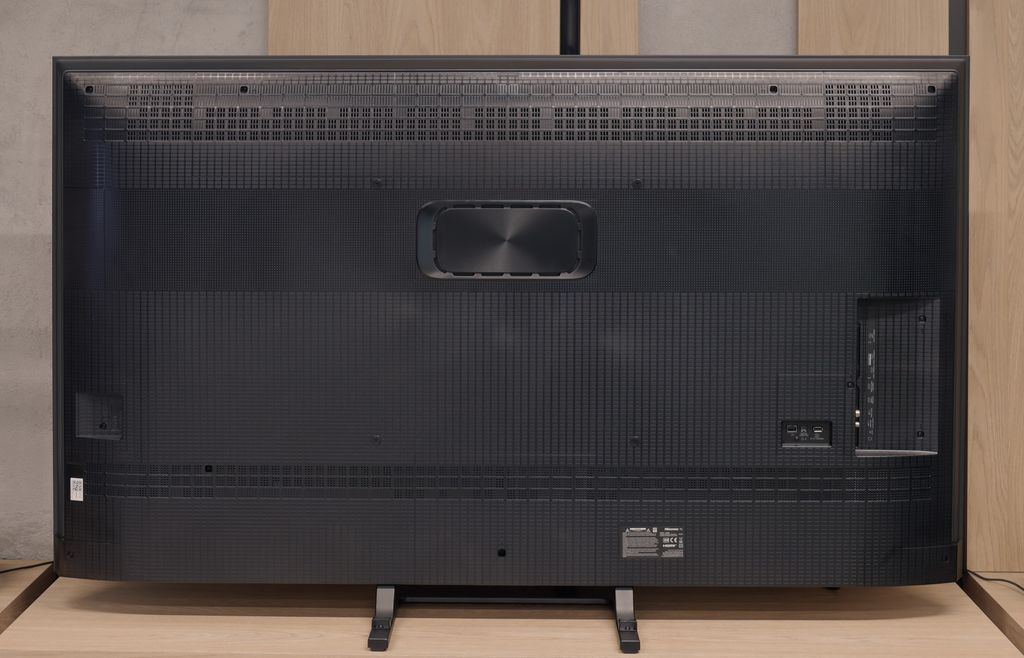
Contrast and black detail
7.2/10
7.6/10
Local dimming function: Yes, number of zones: 713 (31 x 23)
Local dimming function: Yes, number of zones: 220 (10 x 22)
Contrast:

Result
40,750:1

Result
42,600:1

Result
12,000:1

Result
12,150:1

Result
3,450:1

Result
277,000:1

Result
43,700:1

Result
15,750:1

Result
8,850:1

Result
6,350:1
Halo effect and black detail visibility:

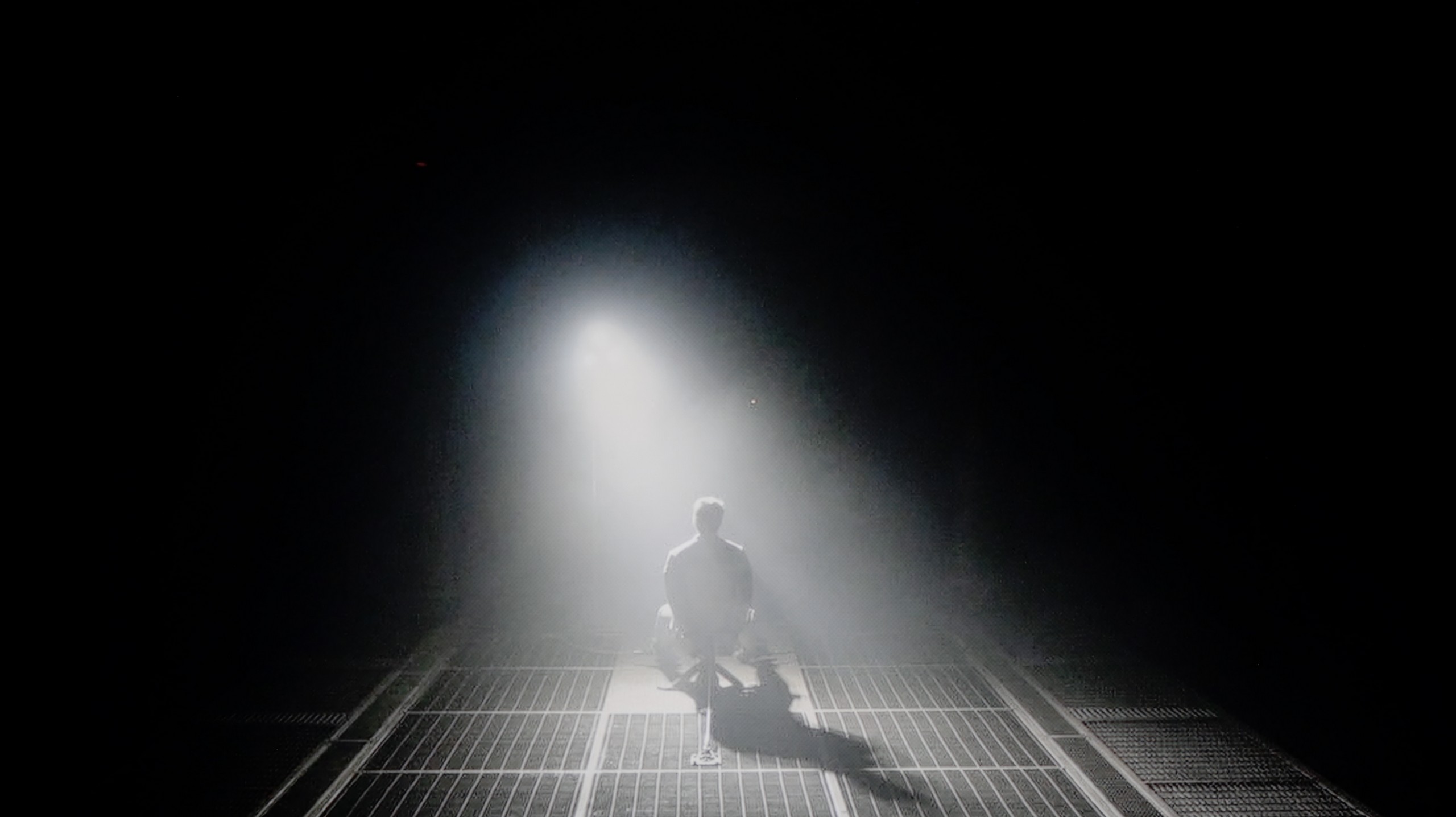
Hisense U7NQ is a television that uses a VA panel, crucial for achieving good contrast and appropriate black depth. This technology translates into vivid image quality when watching content in a dark room, where blacks acquire proper saturation and resemble deep tar rather than washed-out ash. Moreover, the TV features Mini LED backlighting, which in the tested 65-inch variant offers an impressive number of 713 local dimming zones. Naturally, smaller sizes will have fewer zones, while larger ones will have more, positively affecting overall contrast.
Under very favourable conditions, the TV achieves a contrast ratio of around 40,000:1. The local dimming technology performs excellently at managing bright and dark parts of the image, making the TV superbly render details in complex scenes. Despite the large number of zones, there may be issues with contrast in particularly demanding scenes, where small bright elements appear against a dark background. Sometimes the TV may dim these elements too much, causing a loss of brightness, and other times it excessively brightens them, leading to a halo effect—glows of light surrounding objects. This effect can be noticeable, for example, in a scene from the movie Sicario 2, where bright glows around the subtitles can be bothersome.
Nevertheless, the use of Mini LED technology with local dimming makes the overall image quality significantly better than in televisions without this technology. The effect is particularly noticeable when watching movies in a dark room—the blacks are deeper, and the contrast is more pronounced, allowing a full appreciation of details hidden in dark shots.
Similarly to the U7Q, the E8Q model uses a VA panel and Mini-LED backlighting. The number of dimming zones also remains at a very similar level – in the 65-inch variant we tested, we counted 220 zones, which is exactly the same as in the U7Q. On paper, this looks really good for this price segment, but even better – in practice. The contrast is high, and black can be really deep. In many scenes, the lights are clearly separated, and the image gains in spaciousness. This is one of those cases where Mini-LED shows it can approach the quality of OLEDs – provided that we are aware of the limitations we need to consider. In very difficult scenes, there may be slight lightening or minor halo effects around bright objects, but these are phenomena typical of this technology and are not very noticeable. Ultimately – the contrast and blacks in the E8Q are really solid, almost identical to those in the U7Q model. It’s hard to find fault with this, especially when we look at the price of the television.
HDR effect quality
5.9/10
4.5/10
Luminance measurements in HDR:

Result
1023 nit

Result
290 nit

Result
637 nit

Result
198 nit

Result
907 nit

Result
531 nit

Result
148 nit

Result
320 nit

Result
100 nit

Result
625 nit
Scene from the movie “Pan” (about 2800 nits)


Scene from the movie “Billy Lynn” (about 1100 nits)


Static HDR10


Dynamic: Dolby Vision
Dynamic: Dolby Vision


HDR luminance chart:
Hisense E8Q
Luminancja HDR
Luminance of RGB colors
Hisense U7NQ
Luminancja HDR
Luminance of RGB colors
The Hisense U7NQ 65 television demonstrated significant capabilities on the luminance chart, exceeding the 1000-nit barrier and achieving very high brightness results without issue in the first, third, and fifth test scenes. However, as before, in the second and fourth test scenes, for example from the film Sicario 2, there are significant problems with maintaining brightness, and the results around 200 nits are very disappointing. Despite a large number of dimming zones, the algorithm in the television responsible for controlling these zones is unable to react appropriately — in this case, it significantly dims small elements like the moon or the light from a helicopter. The bright light that should blind us is too dim to be called an HDR effect. Nevertheless, it is worth praising the television for its high coverage of the DCI-P3 colour gamut at 96%, which allows it to accurately reproduce most film scenes.
Since the E8Q is a twin of the U7Q, it’s no surprise that the quality of the HDR effect is almost identical. On paper, it looks promising – a peak brightness of 800 nits can impress in many scenes. Fragments like the flashes of light in “The Meg” or shots of the sun in “Life of Pi” can indeed evoke a “wow” effect. But the longer we watch, the more we notice the limitations. The problem arises when small, bright details are supposed to be displayed on a dark background. In such situations, the dimming algorithms try to preserve contrast but end up dimming what should shine the brightest. Instead of dazzling details, we get almost invisible points of light. This is typical for Mini-LED in this price segment and is not surprising – but it’s worth knowing that the HDR effect won't always be fully preserved. Fortunately, the color reproduction offers reasons to be satisfied. A coverage of the DCI-P3 color gamut at around 94% is a very good result, and the applied quantum dot layer (more specifically, PFS) does its job – colors are saturated and vibrant, especially with 4K content.
Factory color reproduction
6.4/10
6.5/10


Factory Mode
After calibration


Factory Mode
After calibration
The Chinese manufacturer offers various picture settings with its televisions, but the best mode in this model is undoubtedly the Filmmaker Mode. Despite its name, this mode has its issues: the white balance, although roughly correct, is characterized by a strong dominance of warm tones due to the kick of red colour, both in 4K and HD materials. The Colour Checker test confirms these errors — deviations in samples are visible in inappropriate shades. As for the brightness characteristics, the gamma responsible for HD materials shows values below 2.4, leading to some brightening of the screen. Meanwhile, the EOTF curve shows the television's problems with displaying small light elements, as confirmed by the previously described paragraphs.
Testing the Hisense E8Q in Filmmaker mode, we were hoping for a neutral image close to the director's vision. Unfortunately - although on paper it doesn't look bad (the color reproduction errors are not significant), in practice the image feels somewhat unnatural. The reason? Too strong an increase in blue and a lack of red in the white balance. The effect? The scenes look cool, and the white appears slightly bluish. Alongside the U7Q model, we also noticed a specific approach to brightness management here. The brightness reproduction curve for HDR content (EOTF) shows that the TV can significantly dim small, bright elements of the screen to maintain contrast - but sometimes it goes too far. On the other hand, it can excessively brighten larger, very bright parts, which disrupts tonal balance. This is a compromise that may not suit everyone – especially if you want an as faithful image as possible right out of the box.
Color reproduction after calibration
7.8/10
7.4/10



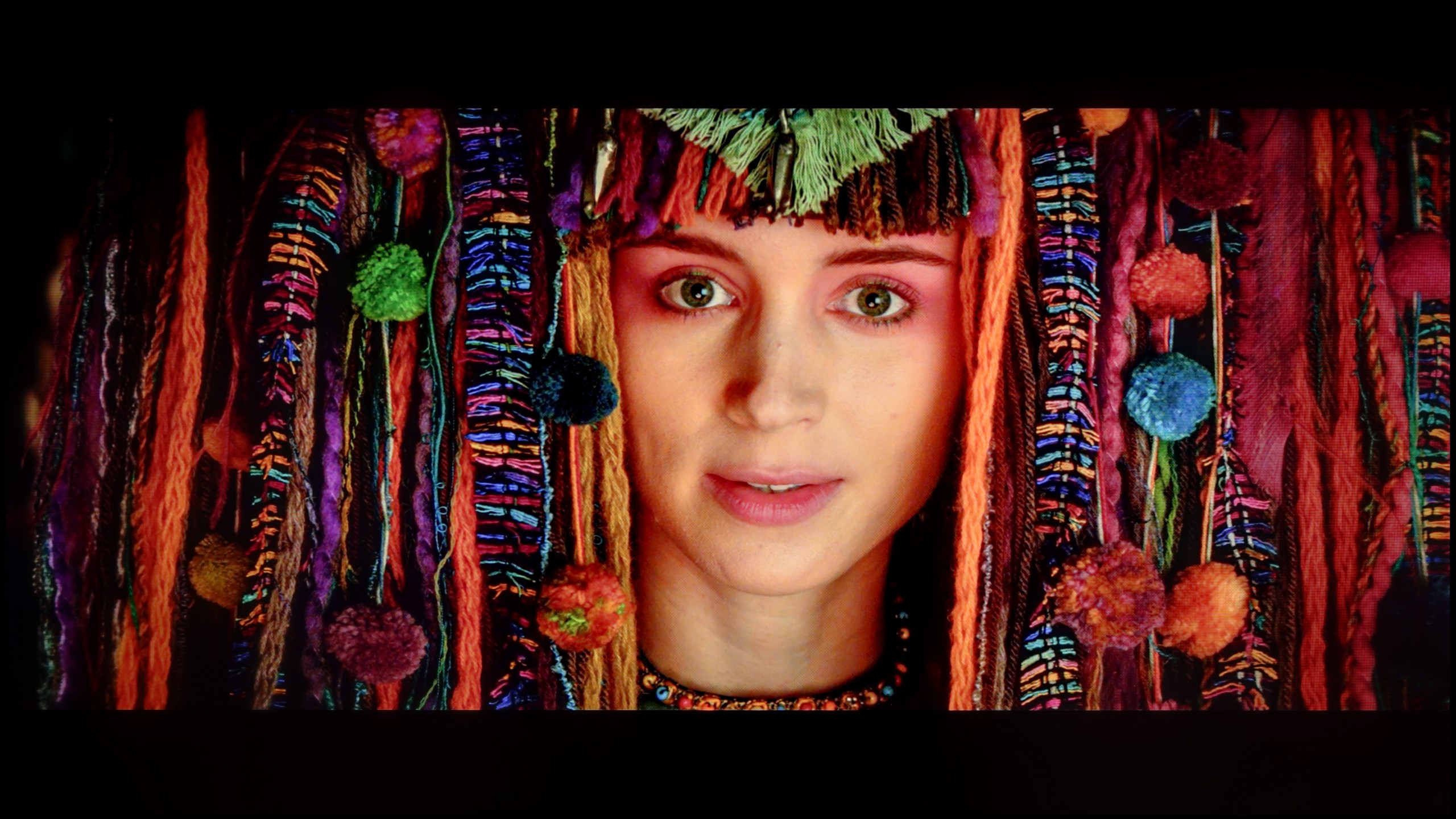
Hisense televisions offer many tools for image correction, allowing users to adjust settings to their preferences. Therefore, we decided to utilize these capabilities to bring the image quality closer to reference standards. In the case of white balance, we managed to eliminate the dominance of red, resulting in more neutral colours, which allowed for a more realistic image in both 4K and HD materials. A similar improvement was noticed in the brightness characteristics. Gamma, which previously led to excessive screen brightness, was corrected, contributing to better detail representation in the darker areas of the image while maintaining a natural tonal balance.
However, the biggest challenge was the calibration of the EOTF curve, which is responsible for brightness in 4K materials. At first glance, the EOTF value appeared almost perfect, but detailed tests showed a slightly different outcome. Upon closer inspection—especially using the filter on the right side of the EOTF chart—we noticed how the television manipulated 4K film materials, often significantly boosting brightness. This effect was particularly noticeable in scenes from films such as Pan and Billy Lynn, where the television attempted to artificially increase the brightness of elements, affecting their naturalness. Despite these imperfections, the calibration yielded positive results, especially in terms of tonal improvement. For most users, the final effect should be satisfactory, especially if they aim to bring image quality closer to professional reference standards.
The calibration of the Movie mode brought really good results, especially regarding SDR content. The white balance was successfully adjusted, which gave the image a natural look – it appeared almost reference-level. The colors were well-saturated, and the overall perception of the content improved significantly. Unfortunately, when we moved to HDR materials, the well-known problems from the U7Q model returned. The TV still tends to “do things its own way,” which is evident from the analysis of the EOTF brightness characteristic – despite calibration, the E8Q still dimmed small details in the shadows, while the bright areas of the screen could sometimes be excessively boosted. In practice, this means that in darker scenes, some of the tiniest details could simply disappear. Although it must be admitted that the entire calibration process brought a lot of good, not everything can be circumvented – even with the use of professional tools. The E8Q can impress with its picture, but in HDR content, its design limitations become noticeable, and it is worth keeping this in mind.
Smoothness of tonal transitions
9.1/10
9.9/10







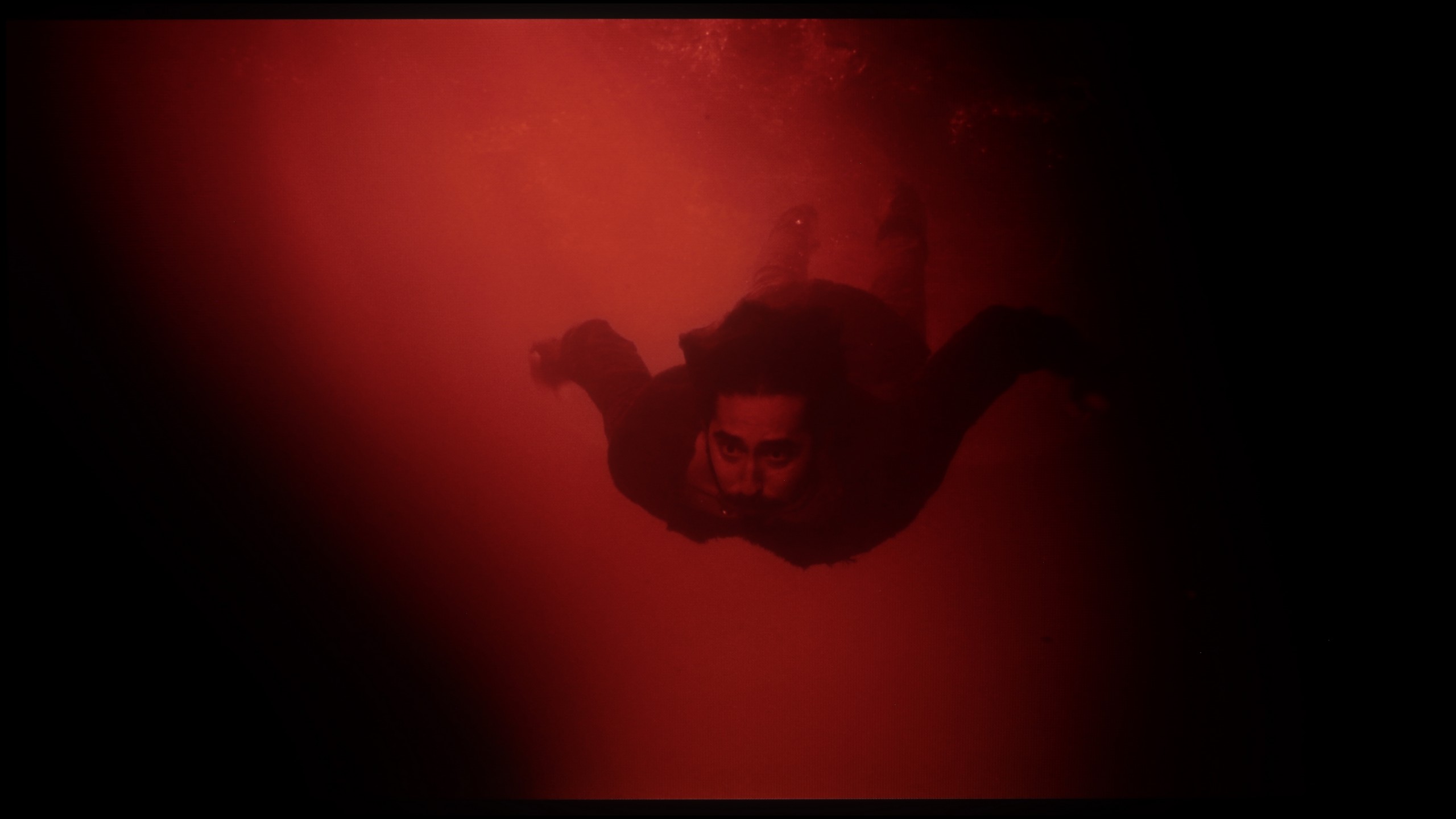




Hisense U7NQ offers excellent fluidity of tonal transitions. Overall, the image is very well balanced, and transitions between different shades of colors are nearly flawless. For more discerning viewers, small joinings in darker hues can be detected; however, these imperfections are minimal and do not significantly affect the overall picture quality. Tonal fluidity is at a very high level, making viewing content on this television particularly enjoyable, with no noticeable problems with gradients and color transitions.
In this category, the Hisense E8Q truly shows its class. The transitions between colors are very smooth, with no "banding" or clear boundaries between tones. The image looks natural, and the color gradient is exceptionally well-executed – even in more difficult scenes. If there are any minor imperfections, they are subtle enough that they don't stand out. It's hard to find fault here – it looks almost exemplary.
Image scaling and smoothness of tonal transitions
5.5/10
6/10
Smooth transition function

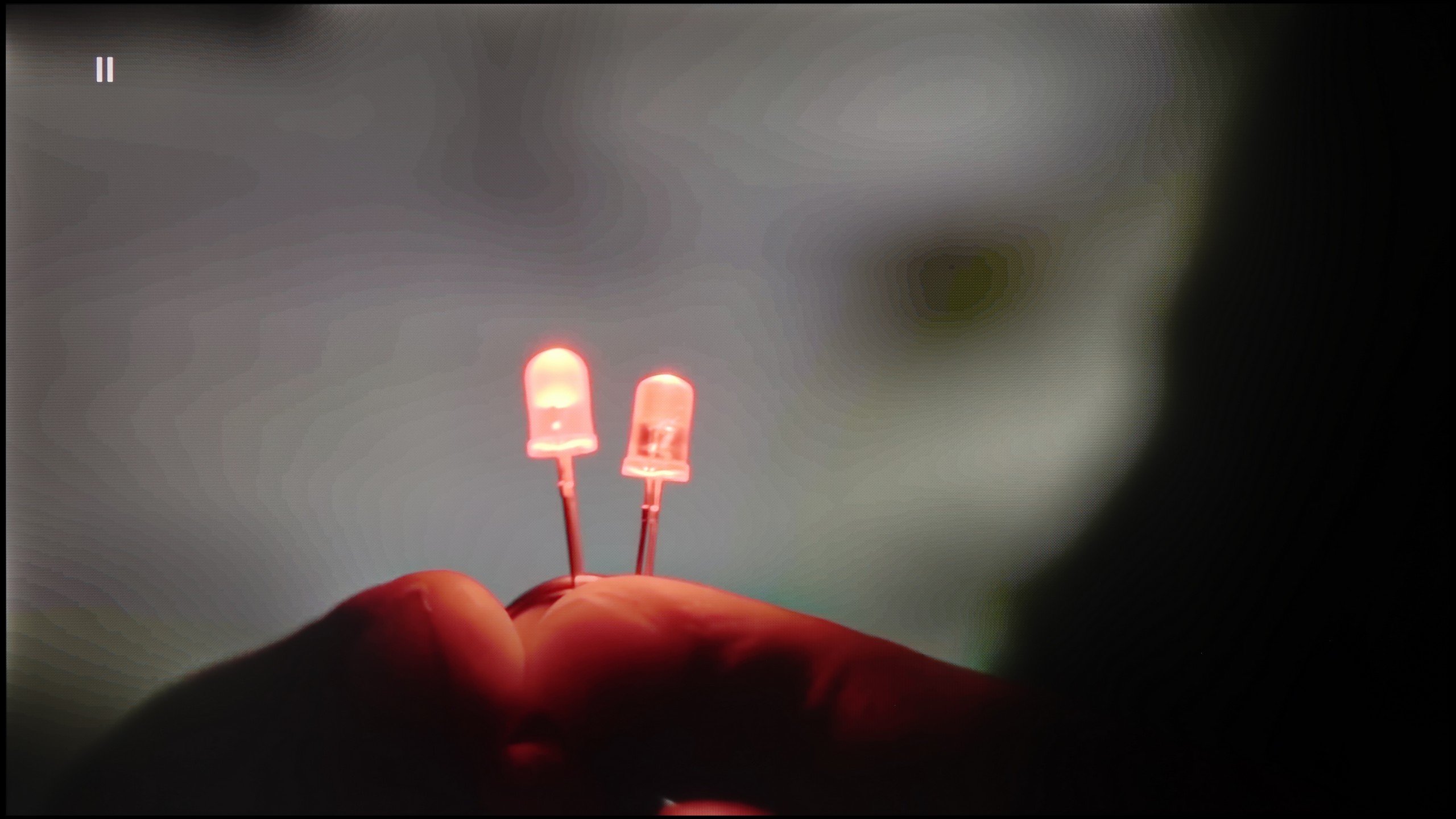
Image without overscan on the SD signal


When it comes to smoothing tonal transitions, despite the presence of the "Smooth and Gradient Image" feature in the test sequence, we did not notice that the feature added anything — we recommend turning it off. As for upscaling, the television handled our model well, and the branches in the background are not excessively jagged — the image seems quite plastic. However, it was slightly cropped by the so-called overscan.
In the case of older materials with lower quality, a gentle smoothing of tonal transitions is often useful. The Hisense E8Q, like the U7Q, has the "Smooth and Gradient Picture" feature, but unfortunately, its effectiveness leaves much to be desired. The “Low” setting is almost imperceptible in operation, while higher settings simply blur details instead of improving transitions. The good news is that the feature does not compromise the film grain, which allows it to maintain the image structure. On the plus side, the scaling is commendable. The television can fairly sensibly transform older content to a higher resolution—without artificially emphasizing contours or excessive sharpening. Though it does not match the best models in this category, it performs quite well for its class.
Blur and motion smoothness
7.3/10
7.5/10


Blur (native resolution, maximum refresh rate):



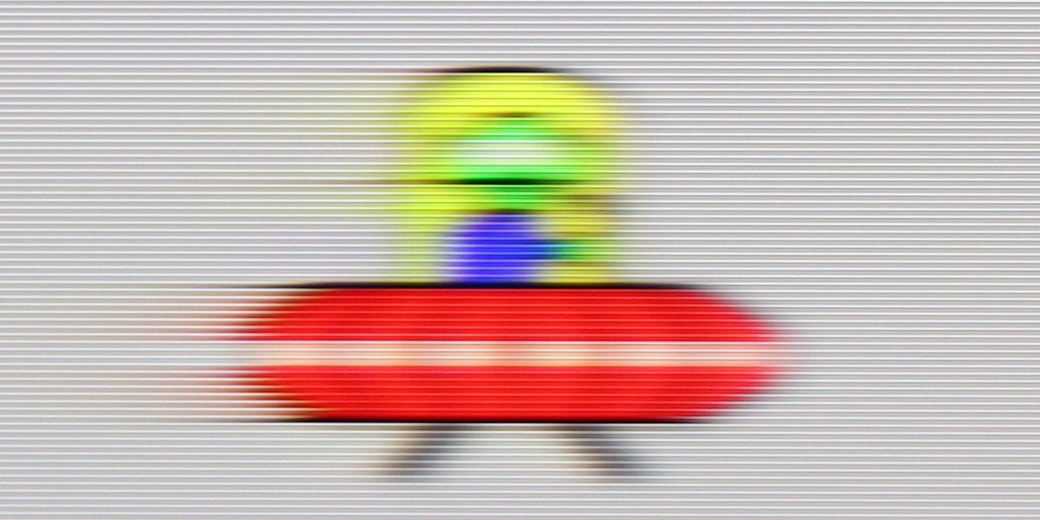
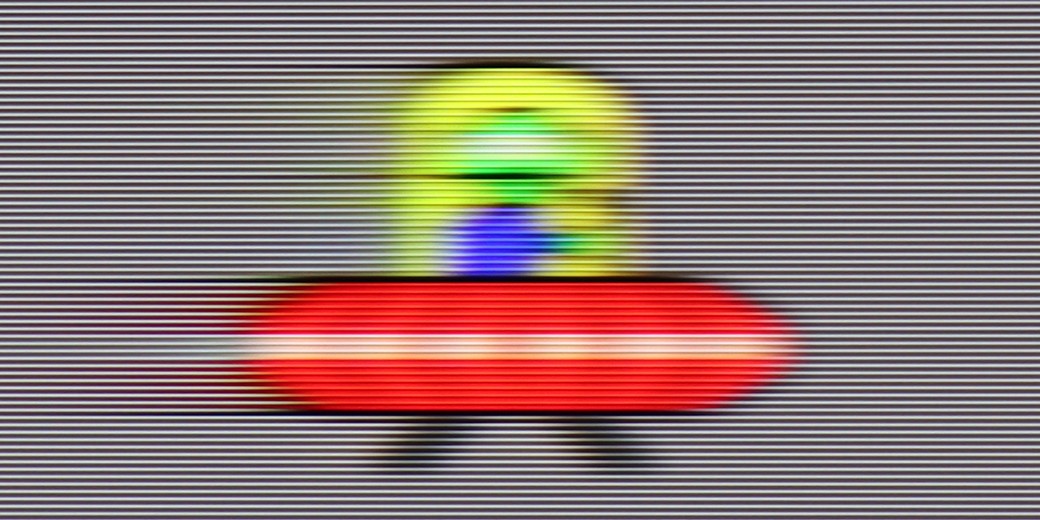
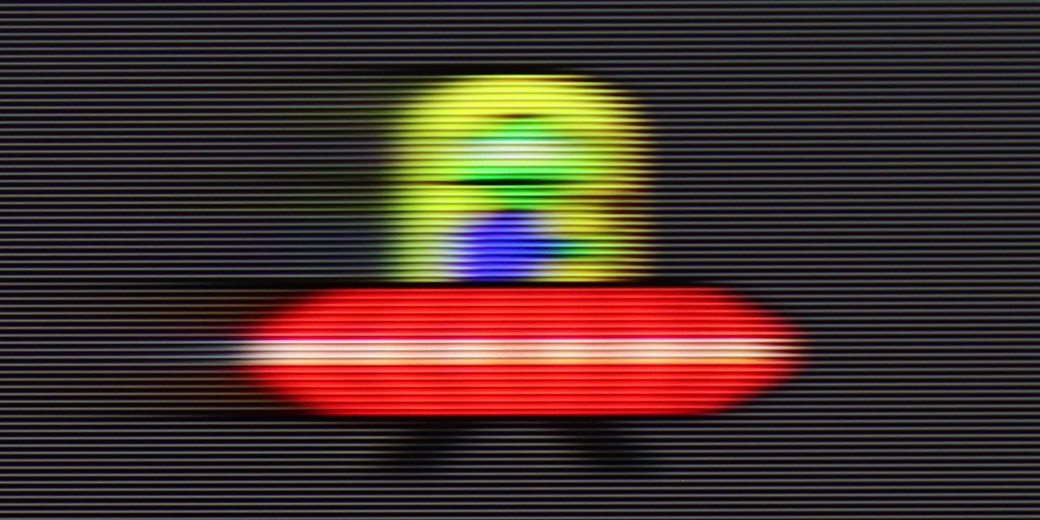
Blur (BFI function enabled):



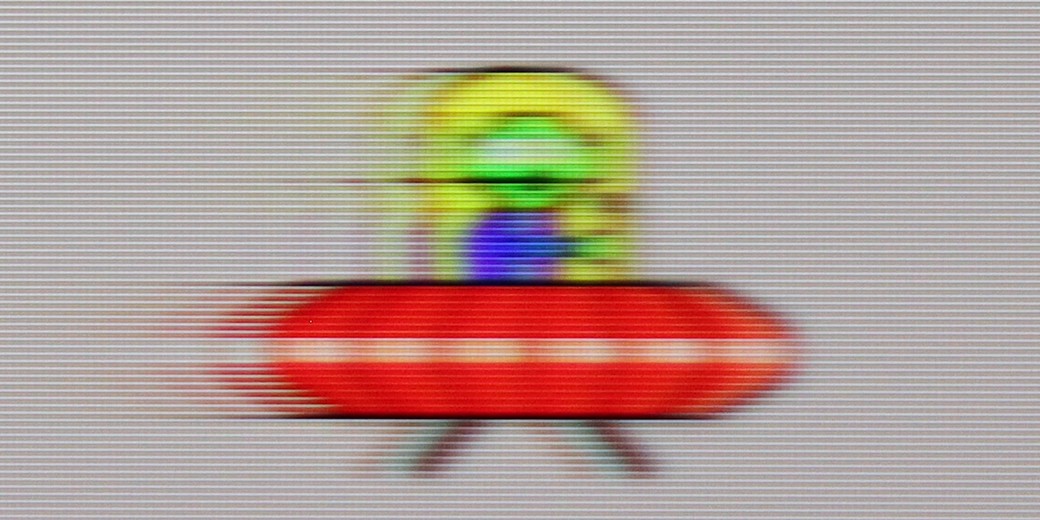


Smużenie ():
Smużenie (4K 120Hz):
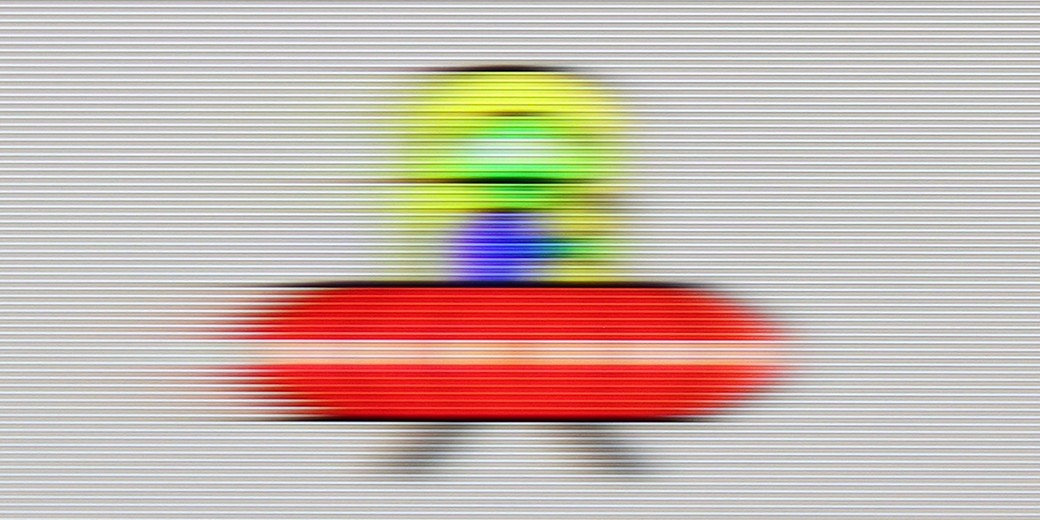
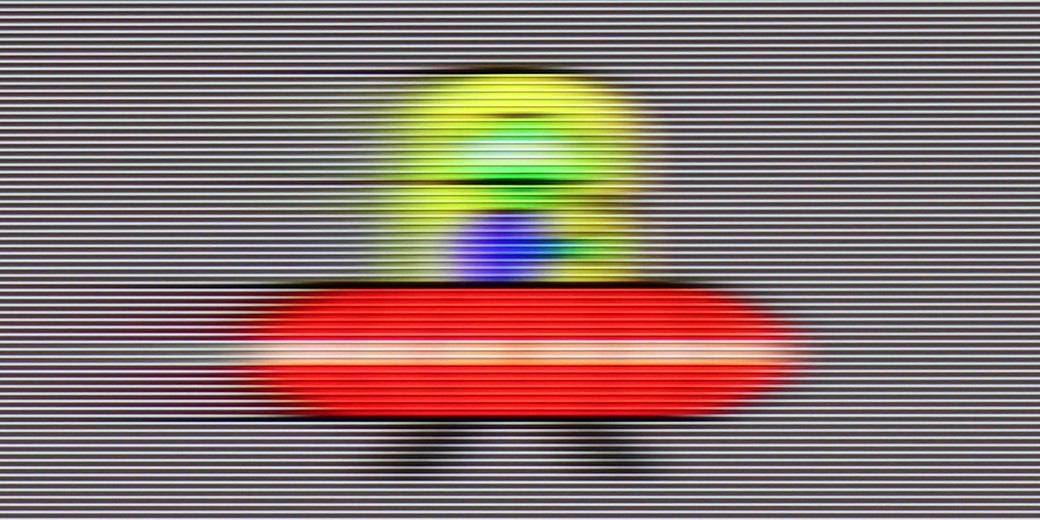
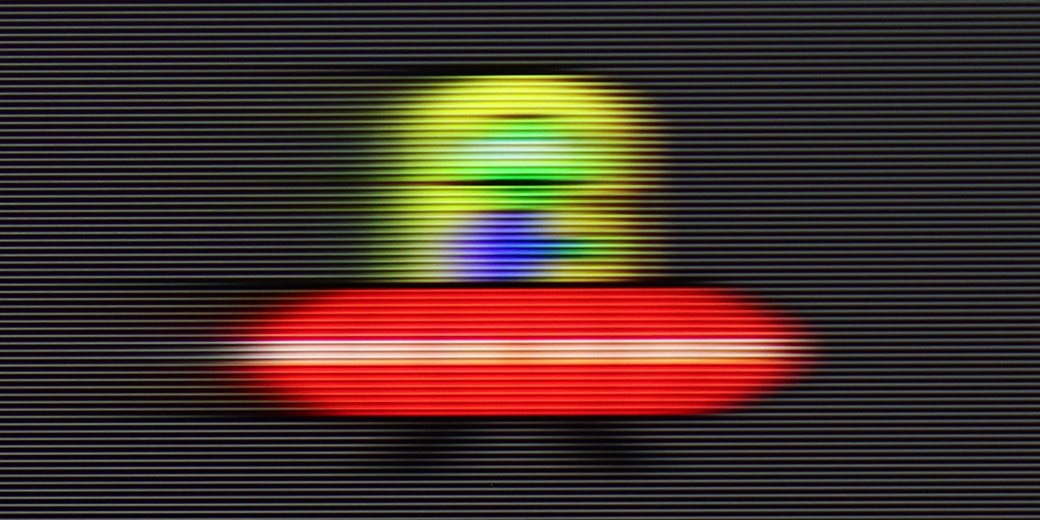
Hisense U7NQ has a refresh rate of 144 Hz, which definitely contributes to smooth motion. For movie enthusiasts, there are two features available: judder reduction and motion blur reduction. The judder reduction feature minimizes the effect of so-called judder, which is the unpleasant stuttering of the image, particularly noticeable at lower frame rates. On the other hand, motion blur reduction helps sharpen fast-moving objects, which is useful when watching dynamic action scenes.
As for motion blur, the TV has a decent response time, so excessive blurriness is not visible, except in specific situations, such as the test with the little green alien on a dark background. In such cases, slight artifacts may appear, but overall, the TV handles dynamic images well, providing satisfactory motion quality.
Like the U7Q, the E8Q model is a fast television designed for dynamic content. It supports 144 Hz refresh rates in 4K resolution, and if for some reason someone is still gaming in Full HD, it can achieve even 240 Hz. This is a significant advantage, especially for PC users looking for maximum fluidity. In everyday use, the television performs very well. The "Ultra Motion Smoothness" mode provides us with two sliders, allowing for personalized image settings – whether it’s more cinematic with preserved film frames or heavily smoothed, almost "series-like." It’s good that the manufacturer gives a choice here instead of imposing one style. On sports materials, live broadcasts, or in games – motion appears clean and stable. Sure, it’s not at the level of OLEDs, but for this price range, the E8Q performs really well.
Console compatibility and gaming features
8.5/10
8.5/10
- ALLM
- VRR
- VRR range48 - 144Hz48 - 240Hz
- Dolby Vision Game Mode
- Correct implementation of HGIG
- 1080p@120Hz
- 1440p@120Hz
- 4K@120Hz
- Game bar

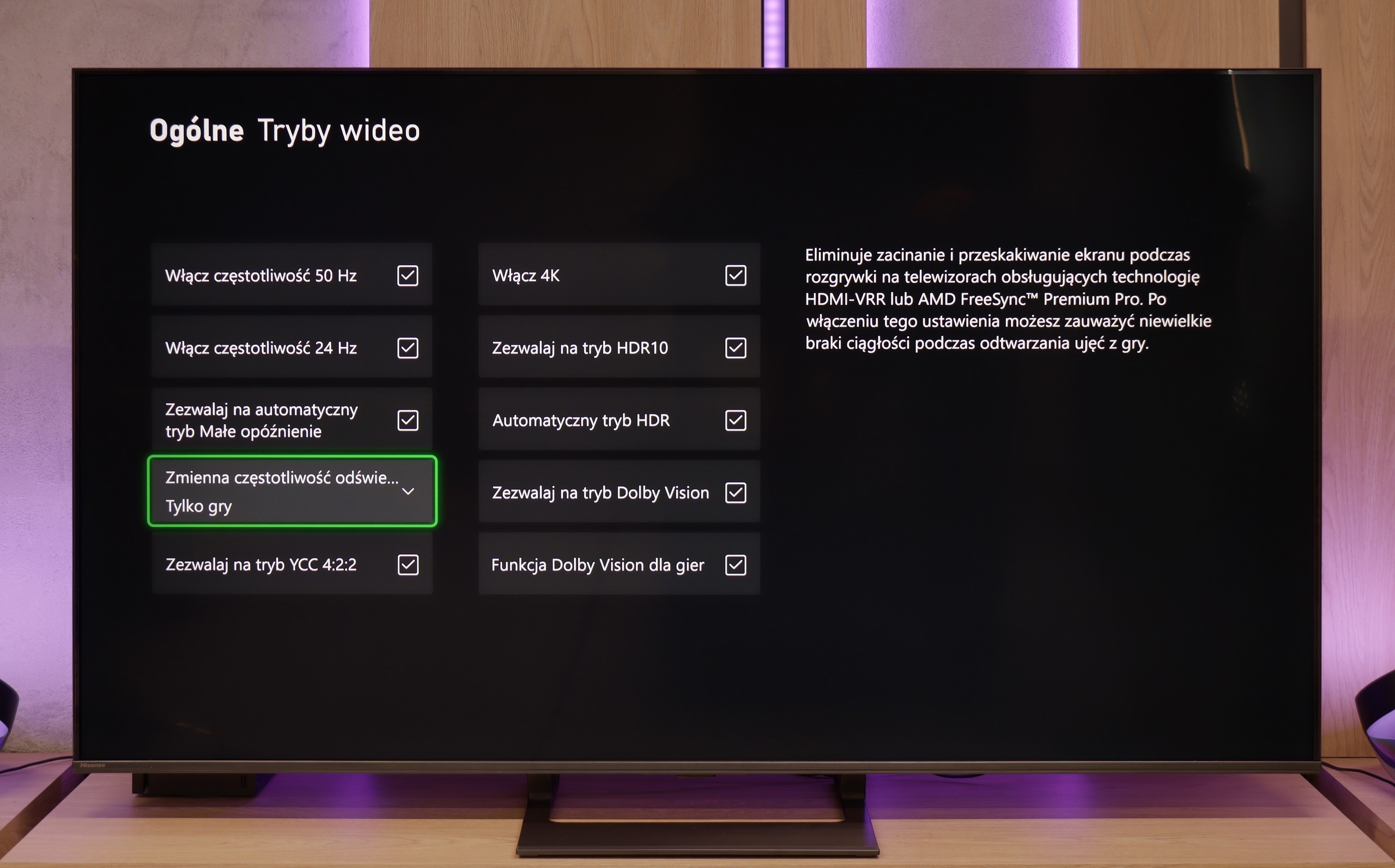

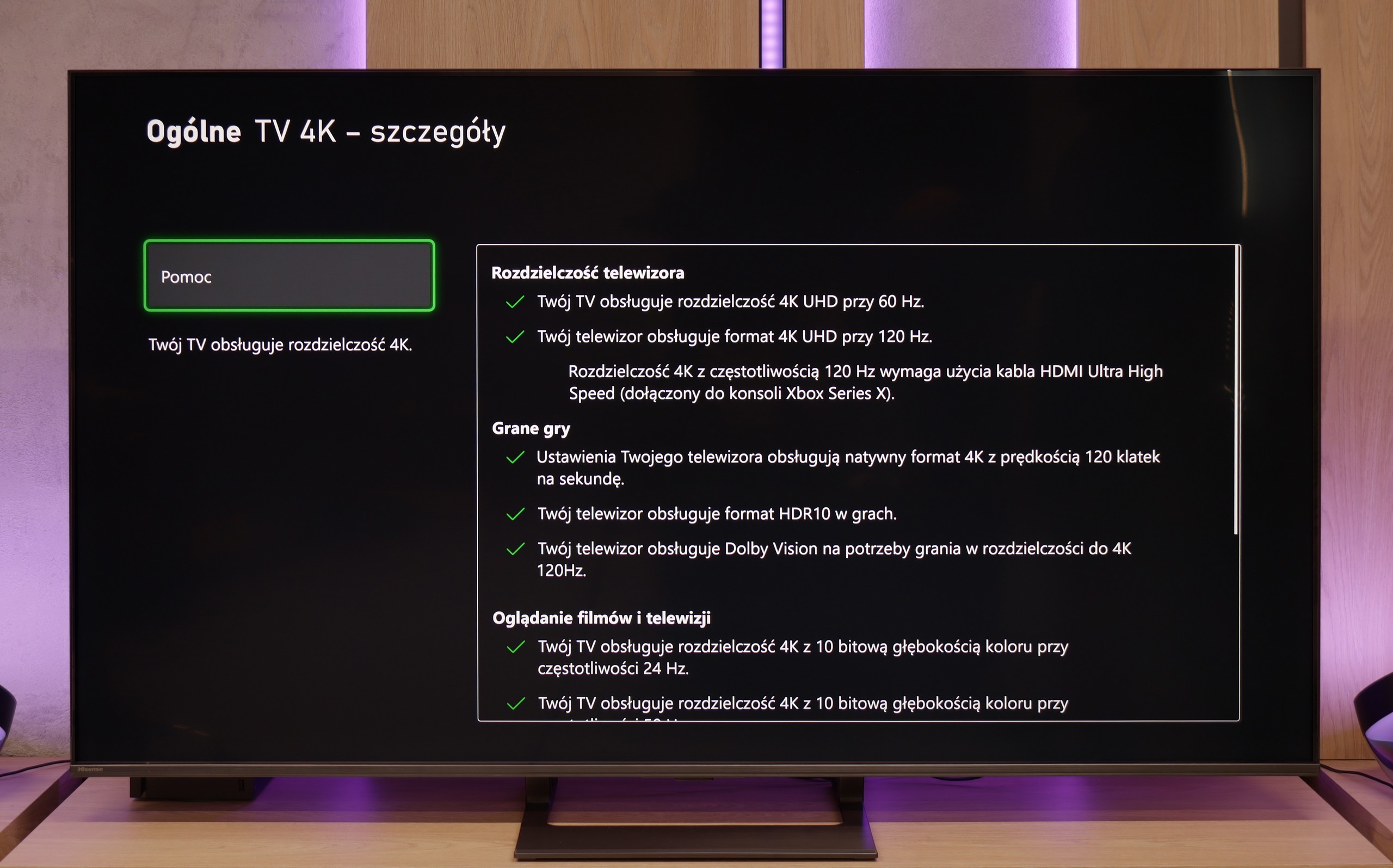

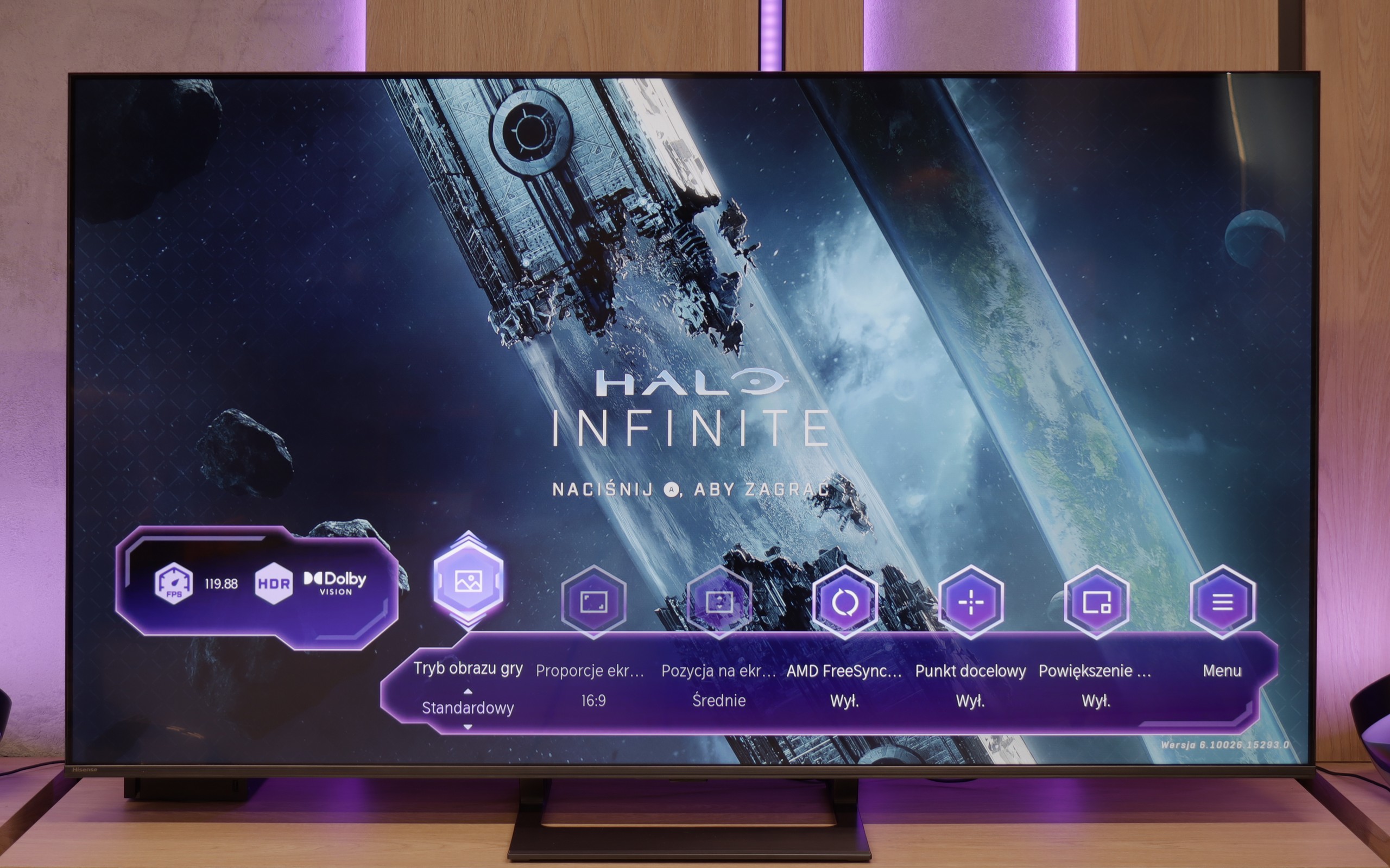

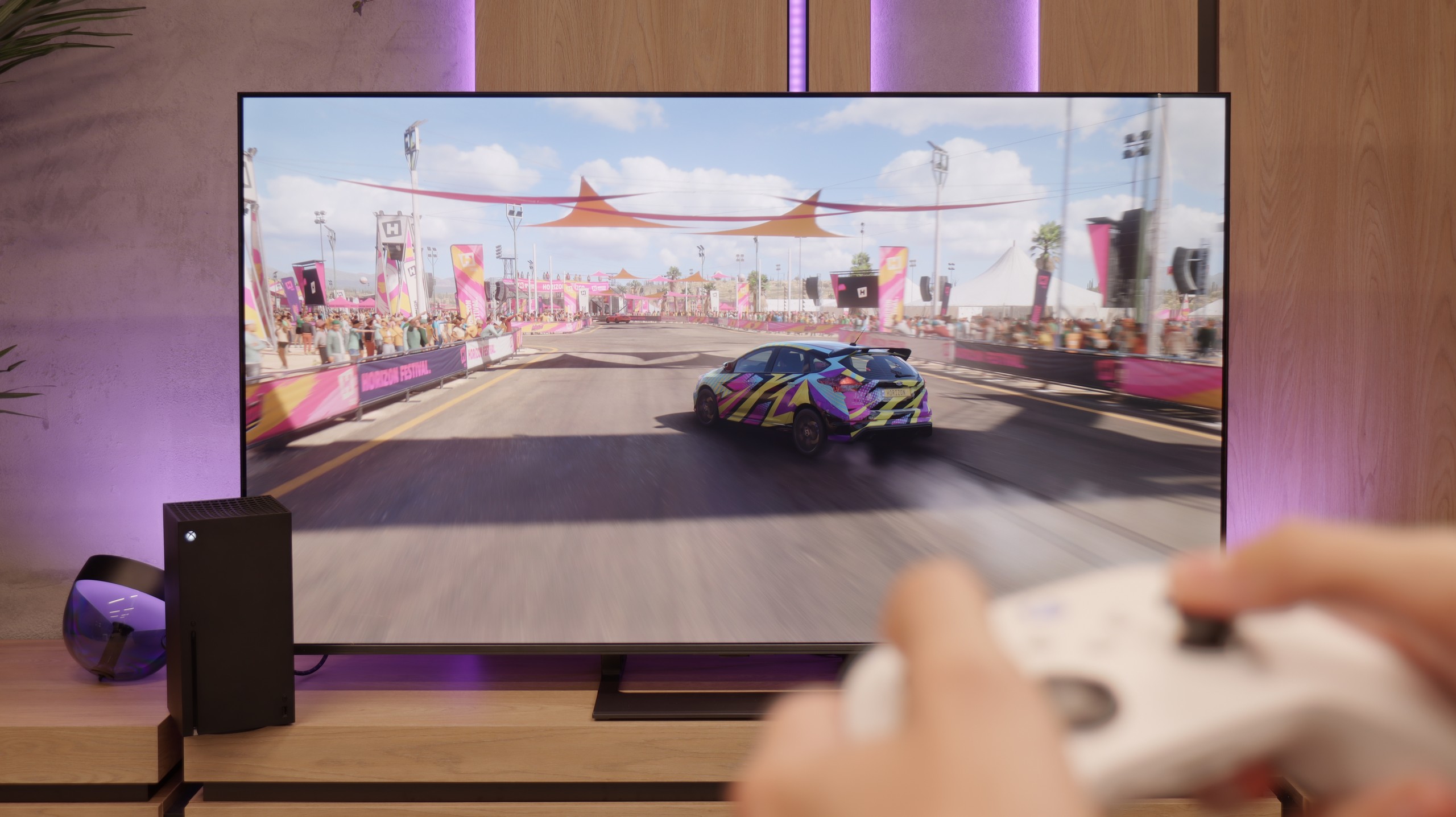
Hisense U7NQ offers everything a gamer might need for comfortable gameplay. The TV supports a refresh rate of 144 Hz, providing an incredibly smooth image, especially in dynamic action games. The VRR (Variable Refresh Rate) feature ensures that the image adapts to changing frames per second, eliminating stuttering and tearing. Additionally, there is an ALLM (Auto Low Latency Mode) feature that automatically switches the TV to game mode, minimizing input lag.
The TV also supports Dolby Vision, which is particularly important for gamers who value high contrast and vivid colors in games that support this format. The Hisense U7NQ also has a Game Bar feature that allows quick access to essential settings during gameplay, as well as support for G-Sync technology, which further reduces image tearing.
Unfortunately, despite the wide range of features, support for the most popular HDR format in gaming — HGiG — is lacking. This may be disappointing for gamers who expect optimal detail representation in HDR scenes. Nevertheless, the remaining features make the Hisense U7NQ a solid choice for any console gaming enthusiast.
The Hisense E8Q does not hide its gaming pedigree. The specification alone reveals that we are dealing with a television that will work great as a gaming screen. Variable Refresh Rate (VRR)? Yes. Automatic low latency mode (ALLM)? It's there too. Additionally, there is impressive refreshment – 120 Hz in 4K or even 240 Hz in Full HD. Such a set is rare in this price segment. Everything works smoothly and without major surprises. The only missing element – like in the U7Q – remains support for HGiG. It's a pity, because this feature makes it easier to match the brightness curve to the capabilities of a particular television, improving visual consistency with the intentions of HDR game creators. Without it, one has to manually tweak the settings, which does not always yield a satisfying result.
Input lag
9.8/10
9.7/10
SDR
HDR
Dolby Vision
Input lag on the Hisense U7NQ is at a remarkable level, with a maximum of 16 ms, which is an excellent result even in Dolby Vision mode. This achievement is worth highlighting, as Dolby Vision mode often increases delays in other TV models, but here it has been avoided. Thanks to the low input lag, gameplay is smooth and responsive, which will be appreciated by both casual gamers and more advanced users.
The E8Q handles delays very well. For 120 Hz content, the input lag is super low – practically unnoticeable even for more demanding gamers. At 60 Hz, the values are a bit higher, but still comfortably within the "placebo" range – there's nothing to complain about. The biggest increase in lag was noted in Dolby Vision Gaming mode. The TV needs more time to process the signal in this mode, but even then, it does not exceed 30 ms. While these may not be perfect values, they won't pose any obstacles for most gamers – especially console gamers.
Compatibility with PC
8/10
8.6/10

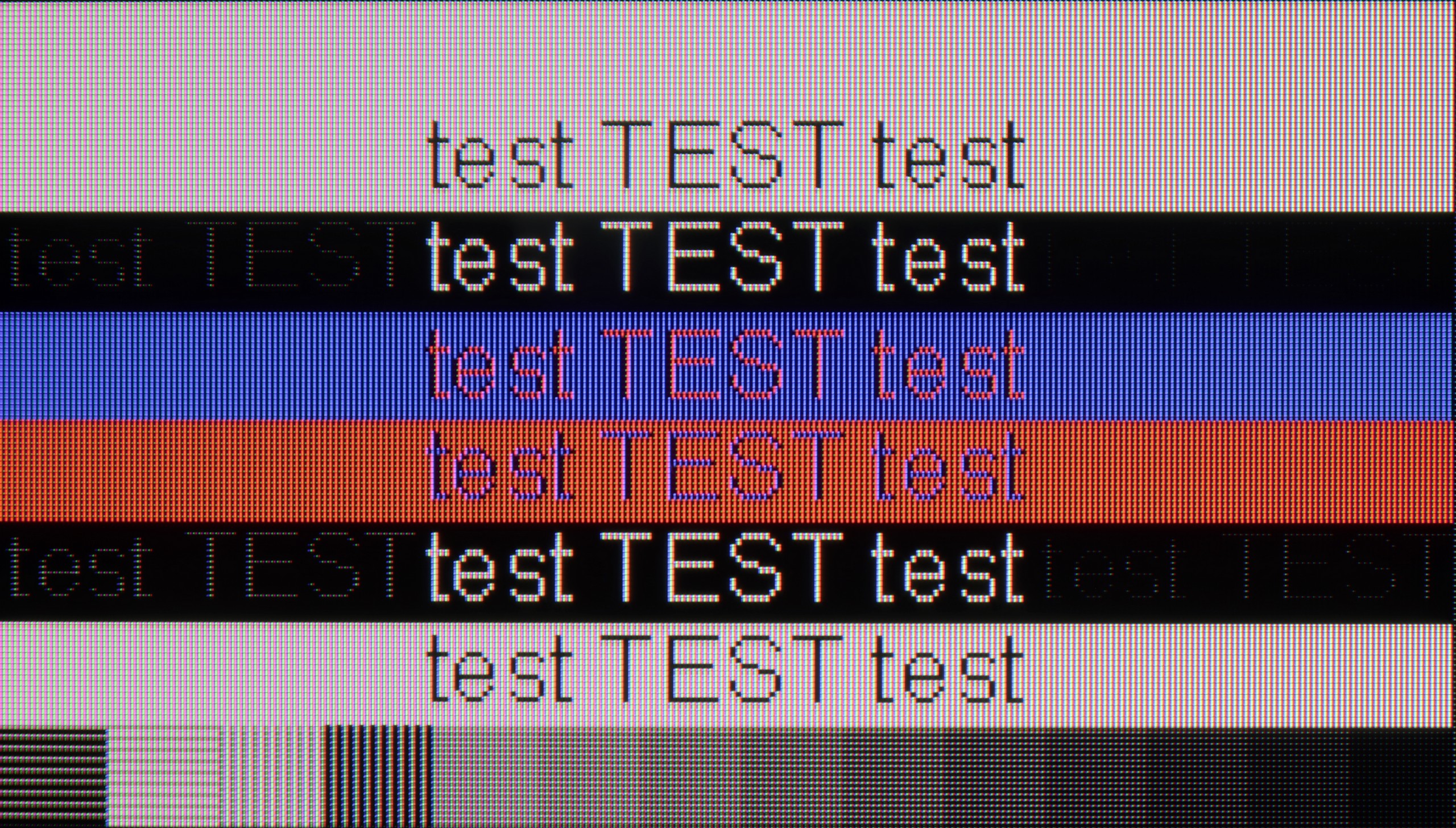
Hisense U7NQ offers full support for chroma 4:4:4, which ensures good font readability, especially when working with text. Overall, the image quality and visibility of characters are at a satisfactory level. However, it is worth noting the issue related to displaying fonts on a dark background — in this situation, the letters become practically invisible, and only vertical subpixels are visible.
In terms of collaboration with the computer, the E8Q performs really well. It supports chroma 4:4:4 at full 4K resolution and at the highest refresh rate, so the readability of fonts – even the smallest ones – is at a very good level. There are minor blurriness issues with exceptionally thin fonts, but in everyday use, this is hard to consider a serious problem. A nice addition for PC gamers is the ability to achieve up to 288 Hz at lower resolutions. The E8Q communicates effortlessly with powerful graphics cards, making it an interesting choice not only for movies or consoles but also for gaming on a computer.
Viewing angles
3.1/10
3/10
The viewing angles on the Hisense U7NQ are typical for a VA panel. Unfortunately, they leave much to be desired. The television lacks a coating that widens the viewing angles, resulting in a significant drop in image quality when viewed at an angle. Colors become washed out, and contrast noticeably decreases, making this television best suited for viewing directly head-on. This is a limitation that needs to be considered, especially if we intend to watch television in a larger group, where viewers may be sitting at different angles.
E8Q, like most TVs with a VA panel, looks best when we sit directly in front of the screen. In this position, one can count on deep blacks, good color saturation, and high contrast. Unfortunately, just moving slightly to the side causes the picture quality to suffer – colors start to fade, and blacks become more gray than black. This isn't surprising, but it's worth keeping in mind, especially if we plan to watch in a larger group from different positions in the living room. As a consolation – in return, we get significantly better black levels than with IPS panels.
TV efficiency during daytime
7.6/10
6.2/10

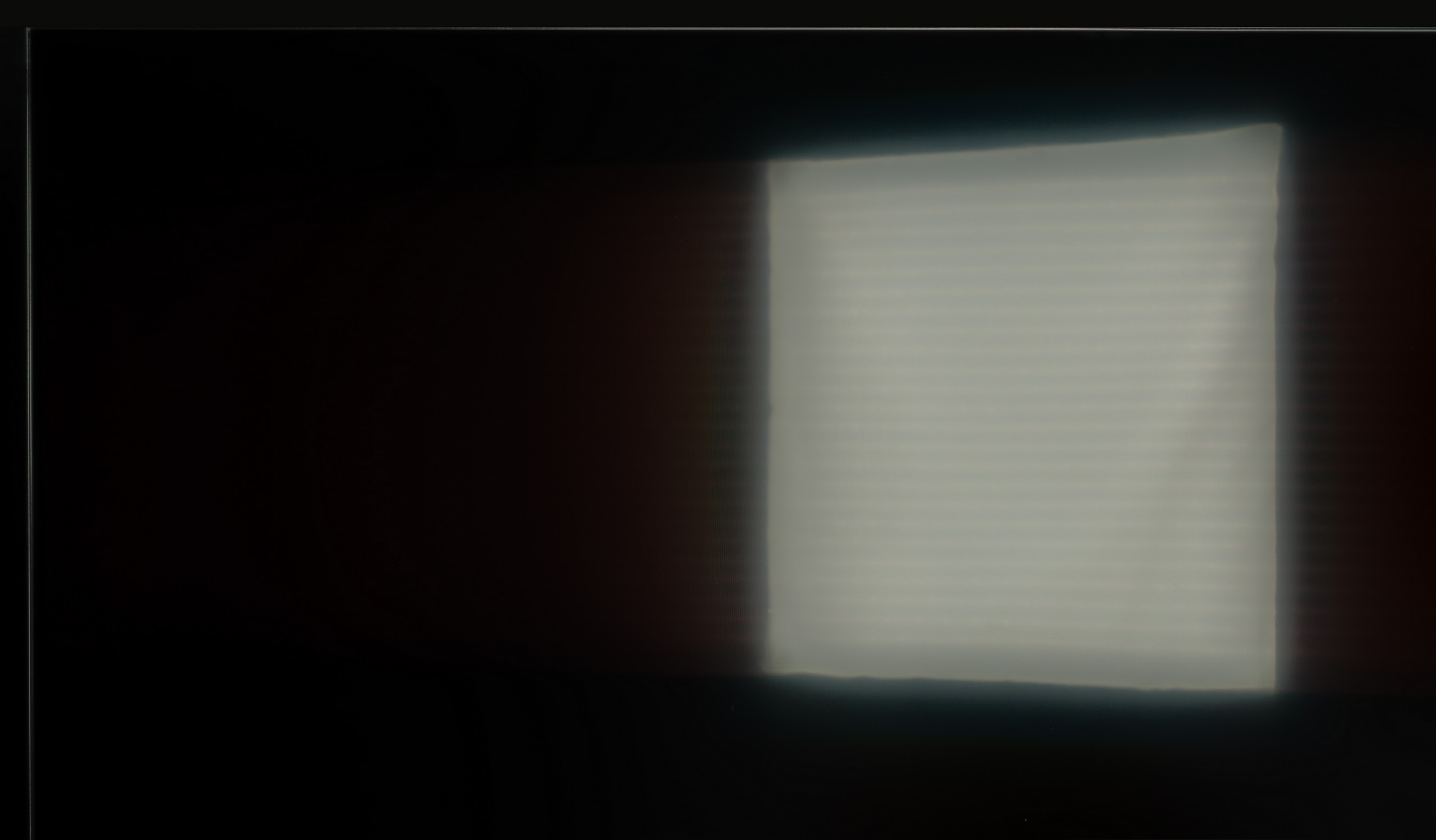


Matrix brightness
Average luminance SDR
Hisense E8Q: 504 cd/m2
Hisense U7NQ: 915 cd/m2
Hisense U7NQ is equipped with a matte coating panel that moderately suppresses reflections. Nevertheless, a brightness level of 915 cd/m² is impressive and ensures that the television performs very well even in bright rooms. With such high brightness, watching content during the day is not a problem, and the image remains clear and legible even with a large amount of external light.
The Hisense E8Q is not afraid of bright interiors. Even when the full sun is shining outside, the television can maintain good image clarity. A brightness level of around 500 nits ensures that you can comfortably watch content during the day, without feeling that everything is drowning in glare. The satin screen coating also helps to pleasantly reduce reflections – it doesn't eliminate them completely, but limits them enough that they don't interfere with everyday viewing.
Details about the matrix
Subpixel Structure:

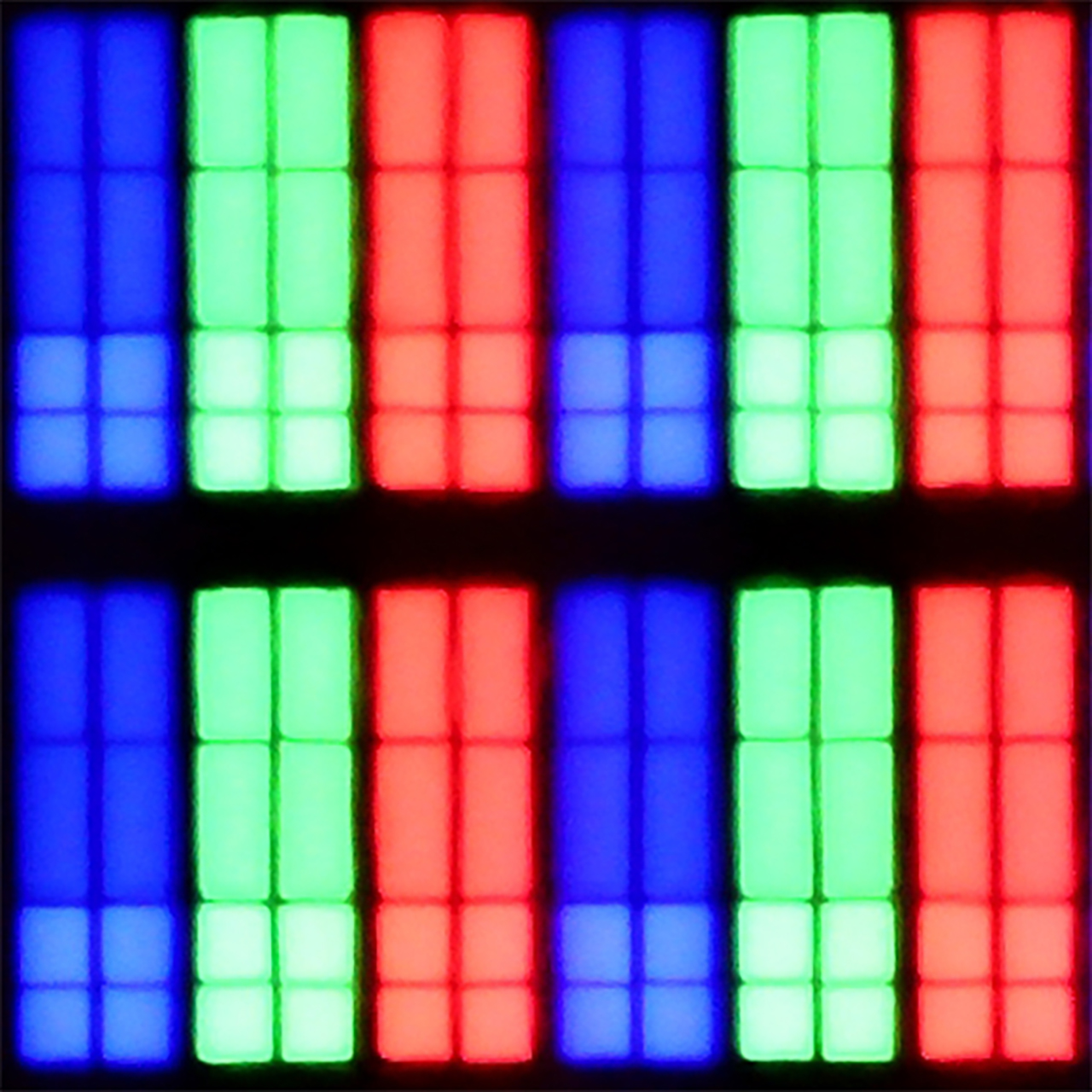
Panel uniformity and thermal imaging:


Hisense U7NQ
Hisense E8Q
TV features
9/10
8.9/10
- HDMI inputs2 x HDMI 2.0, 2 x HDMI 2.1 48Gbps2 x HDMI 2.0, 2 x HDMI 2.1 48Gbps
- Other inputsRCA (Chinch)
- OutputsToslink (Optical audio), eARC (HDMI), ARC (HDMI), Mini-Jack (Headphones)Toslink (Optical audio), eARC (HDMI), ARC (HDMI), Mini-Jack (Headphones)
- Network InterfacesWi-Fi 2.4GHz, Wi-Fi 5GHzWi-Fi 2.4GHz, Wi-Fi 5GHz, Ethernet (LAN) 100Mbps
- TV receptionDVB-T, DVB-T2, DVB-S, DVB-S2, DVB-CDVB-T, DVB-T2, DVB-S, DVB-S2, DVB-C
Classic features:
- Recording to USB (terrestrial TV)
- Recording programming
- Picture in Picture (PiP)
- RF remote control (no need to aim at the screen)
- Backlit remote control
- Teletext
- Audio only mode
- Possibility to connect Bluetooth headphones to the TV
- Possibility to simultaneously use Bluetooth headphones and the TV speaker
Smart features:
- AirPlay
- Screen mirroring (Windows Miracast)
- Wyszukiwanie głosowe
- Voice search in native language
- Ability to connect a keyboard and mouse


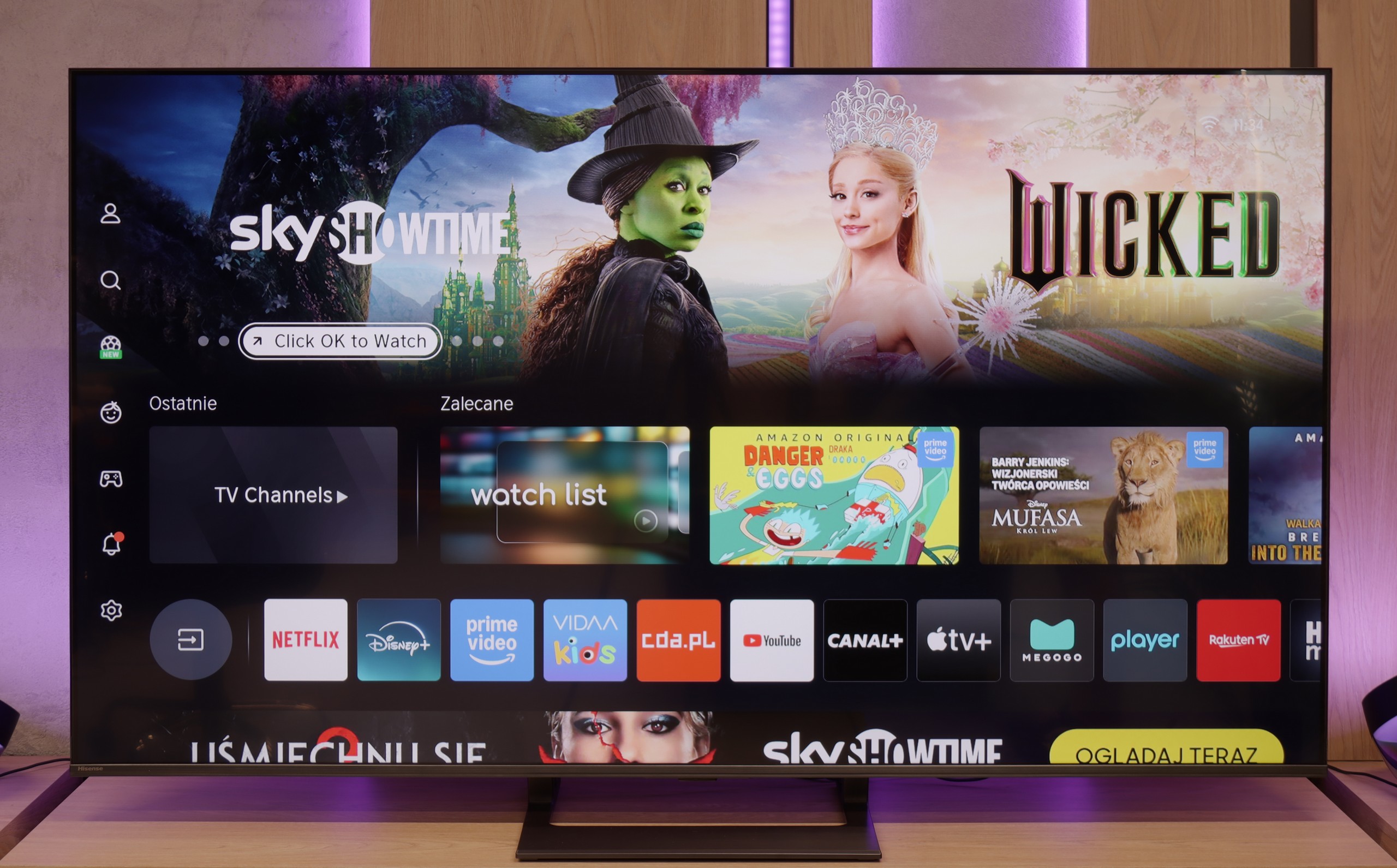
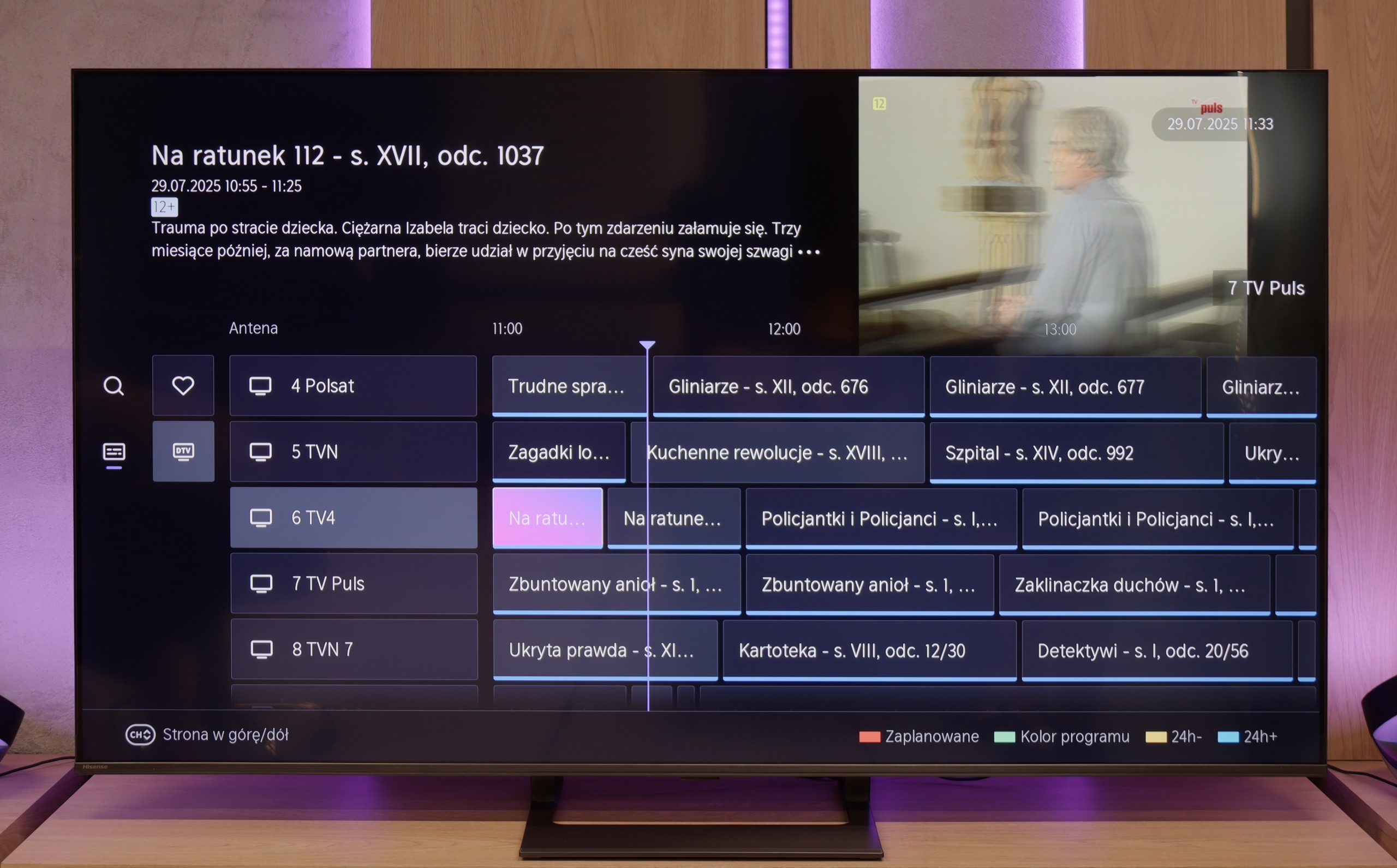
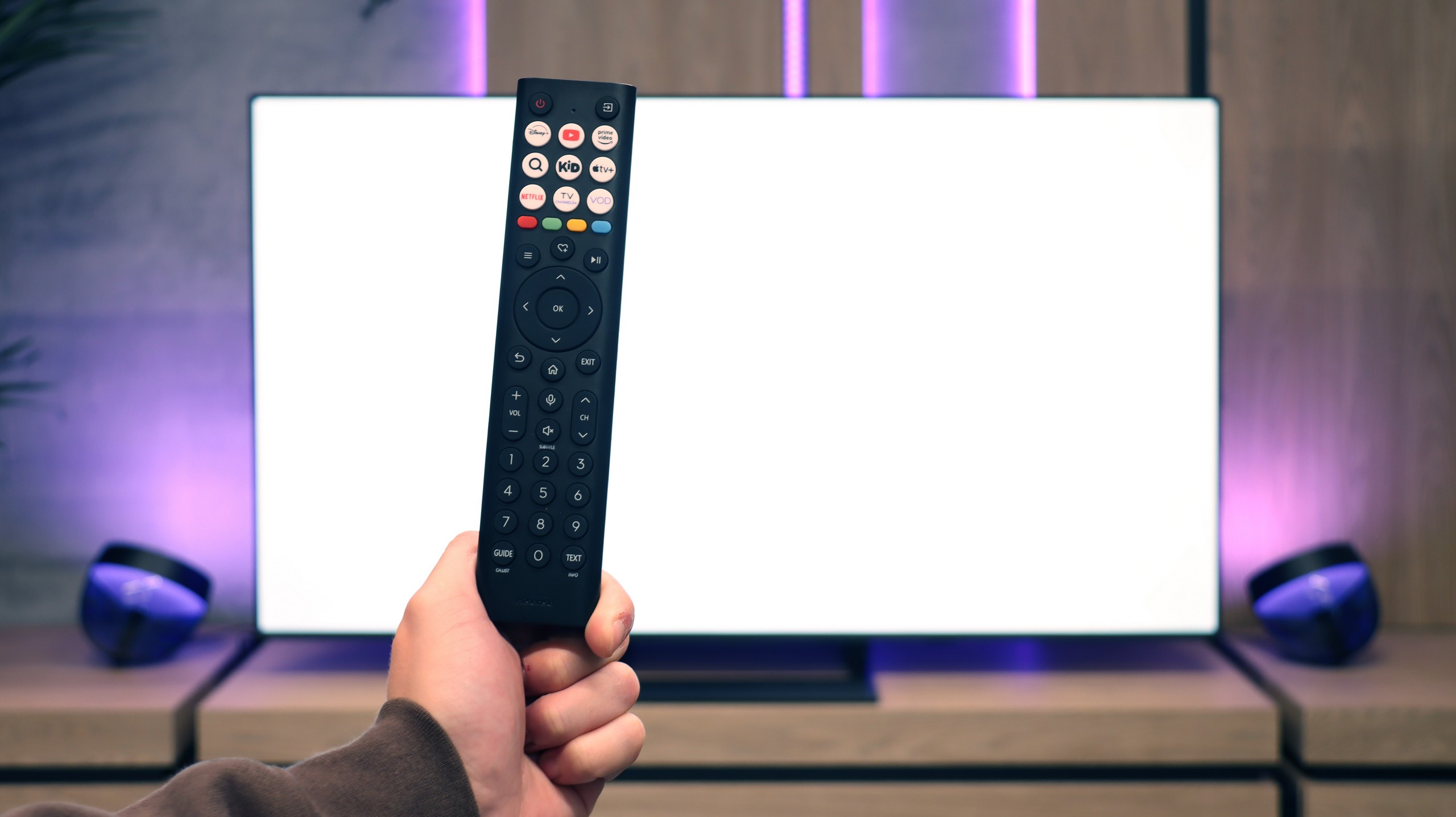

Hisense U7NQ uses the VIDAA operating system, which generally works quickly and smoothly, offering a user-friendly interface. There are plenty of applications available, but unfortunately, it lacks music apps like Spotify or Tidal. This is a limitation that may discourage users looking for a more developed app ecosystem.
The TV offers many useful user features that enhance its versatility. The ability to record programs, support for AirPlay, and Bluetooth for connecting various peripheral devices mean that the Hisense U7NQ can successfully serve as a central point for home entertainment.
Hisense U7NQ looks modern thanks to its narrow bezels and elegant single stand that pairs well with the rest of the device. However, the device itself is not among the sleekest on the market, especially compared to competing models from Korean manufacturers known for their exceptionally thin TVs. Despite this, Hisense U7NQ still offers an aesthetic and stylish design that will easily fit into most interiors.
Classic Features – E8Q
The Hisense E8Q is not only equipment for gamers or movie enthusiasts – it can also serve as a daily television for the entire family. We can record programs to USB, connect headphones or speakers via Bluetooth, and the entire interface – including the channel guide – is clear and easy to use. It only lacks the PiP function, but aside from that, the set of classic features is truly complete.
Smart TV – VIDAA System
The E8Q runs on the VIDAA system, which is becoming more refined year by year. Voice search in Polish works flawlessly, and it's easy to cast from your phone (AirPlay and screen mirroring). The system operates smoothly, without any hiccups, although – as is often the case with closed platforms – there may occasionally be one or two less popular apps missing. Therefore, it’s worth checking before purchase to see if everything we use daily is available there.
Playing files from USB
9/10
8.2/10
Supported photo formats:
Maximum photo resolution:

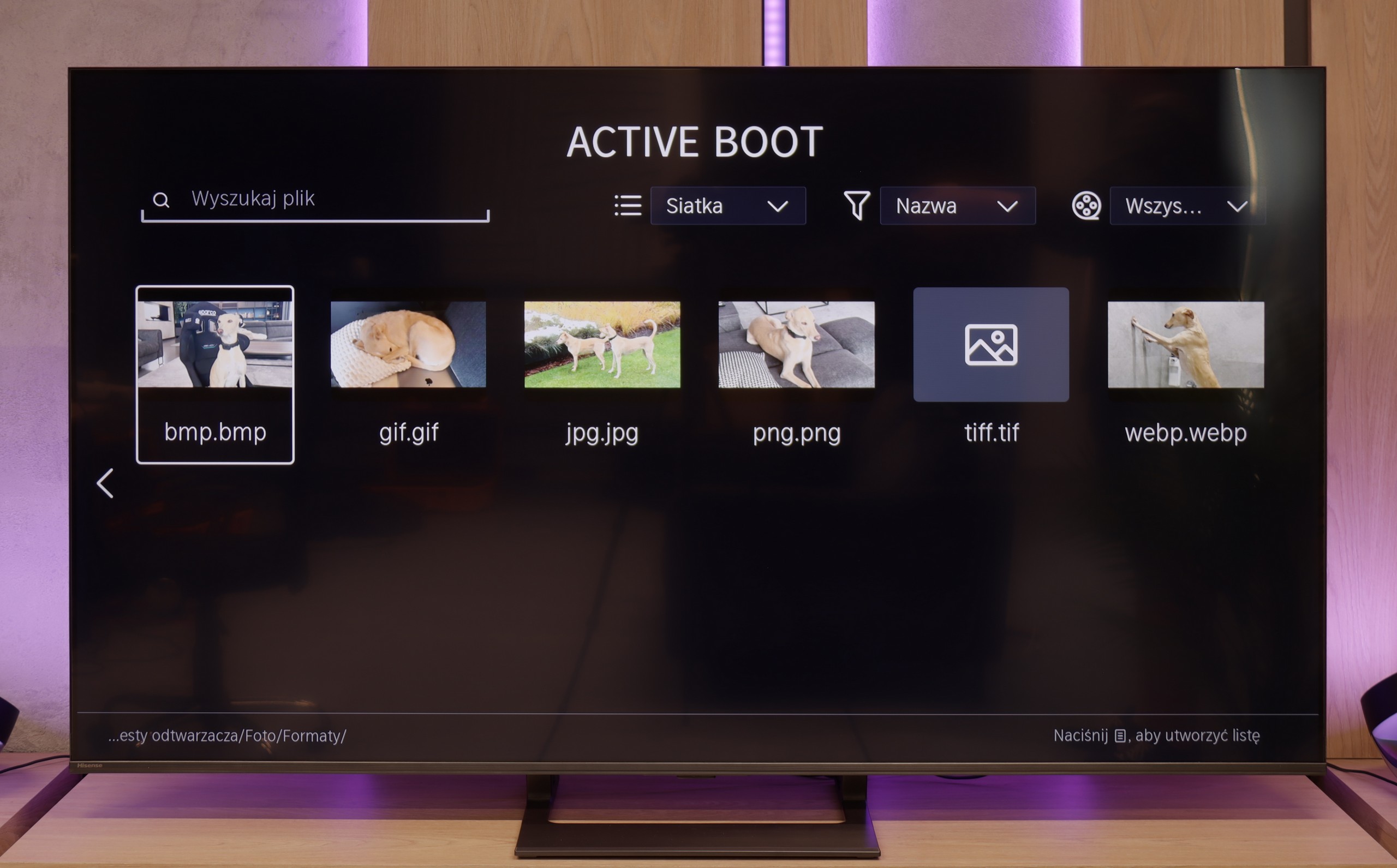
The built-in media player in E8Q performs quite well. It supports most popular video and audio formats, and files from USB drives or external disks play without major issues. Polish characters? They are supported. Subtitles? They work. The only minor drawback is the occasional problem with displaying high-resolution images – especially those from cameras or smartphones. So if you plan to show vacation photos on a large screen, it’s worth checking in advance whether they will all load correctly from the drive’s memory or USB stick.
Apps
7.7/10
7.7/10














































Sound
6.9/10
7.2/10
- Maximum volume85dB85dB
- Dolby Digital Plus 7.1
- Dolby True HD 7.1
- Dolby Atmos in Dolby Digital Plus (JOC)
- Dolby Atmos in Dolby True HD
- DTS:X in DTS-HD MA
- DTS-HD Master Audio
Unfortunately, the Hisense E8Q did not leave the best impression on us. Although on paper it has speakers with a power of 40 W (which is only slightly less than the 50 W in the U7Q), in practice, the difference is significant—and unfortunately not in favor of the E8Q. During testing, it quickly became apparent that something was off. When the volume was raised above 40-50%, the entire back housing began to resonate, and unpleasant crackling sounds emerged from the television. Even during regular viewing, it was hard not to notice this, and definitely hard not to hear it. In this form, it is difficult to talk about listening comfort. We do not rule out that this was a problem with a specific test unit, but nonetheless—it is worth keeping this in mind. If good sound is important to you, consider connecting a soundbar or… stick with the U7Q, which performs significantly better.
Acoustic Measurements
No acoustic data
85dBC (Max)
75dBC


